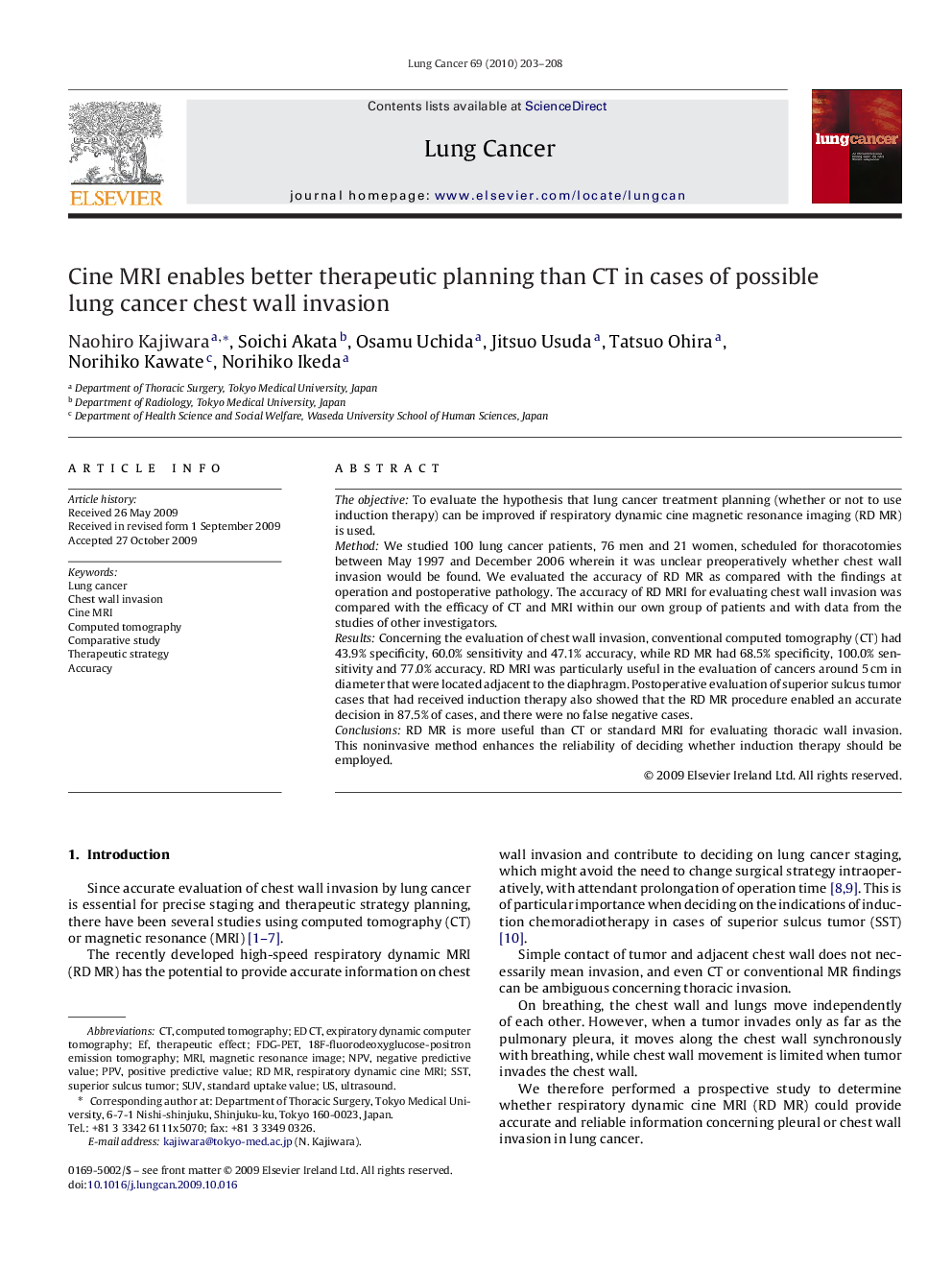| Article ID | Journal | Published Year | Pages | File Type |
|---|---|---|---|---|
| 2142860 | Lung Cancer | 2010 | 6 Pages |
The objectiveTo evaluate the hypothesis that lung cancer treatment planning (whether or not to use induction therapy) can be improved if respiratory dynamic cine magnetic resonance imaging (RD MR) is used.MethodWe studied 100 lung cancer patients, 76 men and 21 women, scheduled for thoracotomies between May 1997 and December 2006 wherein it was unclear preoperatively whether chest wall invasion would be found. We evaluated the accuracy of RD MR as compared with the findings at operation and postoperative pathology. The accuracy of RD MRI for evaluating chest wall invasion was compared with the efficacy of CT and MRI within our own group of patients and with data from the studies of other investigators.ResultsConcerning the evaluation of chest wall invasion, conventional computed tomography (CT) had 43.9% specificity, 60.0% sensitivity and 47.1% accuracy, while RD MR had 68.5% specificity, 100.0% sensitivity and 77.0% accuracy. RD MRI was particularly useful in the evaluation of cancers around 5 cm in diameter that were located adjacent to the diaphragm. Postoperative evaluation of superior sulcus tumor cases that had received induction therapy also showed that the RD MR procedure enabled an accurate decision in 87.5% of cases, and there were no false negative cases.ConclusionsRD MR is more useful than CT or standard MRI for evaluating thoracic wall invasion. This noninvasive method enhances the reliability of deciding whether induction therapy should be employed.
